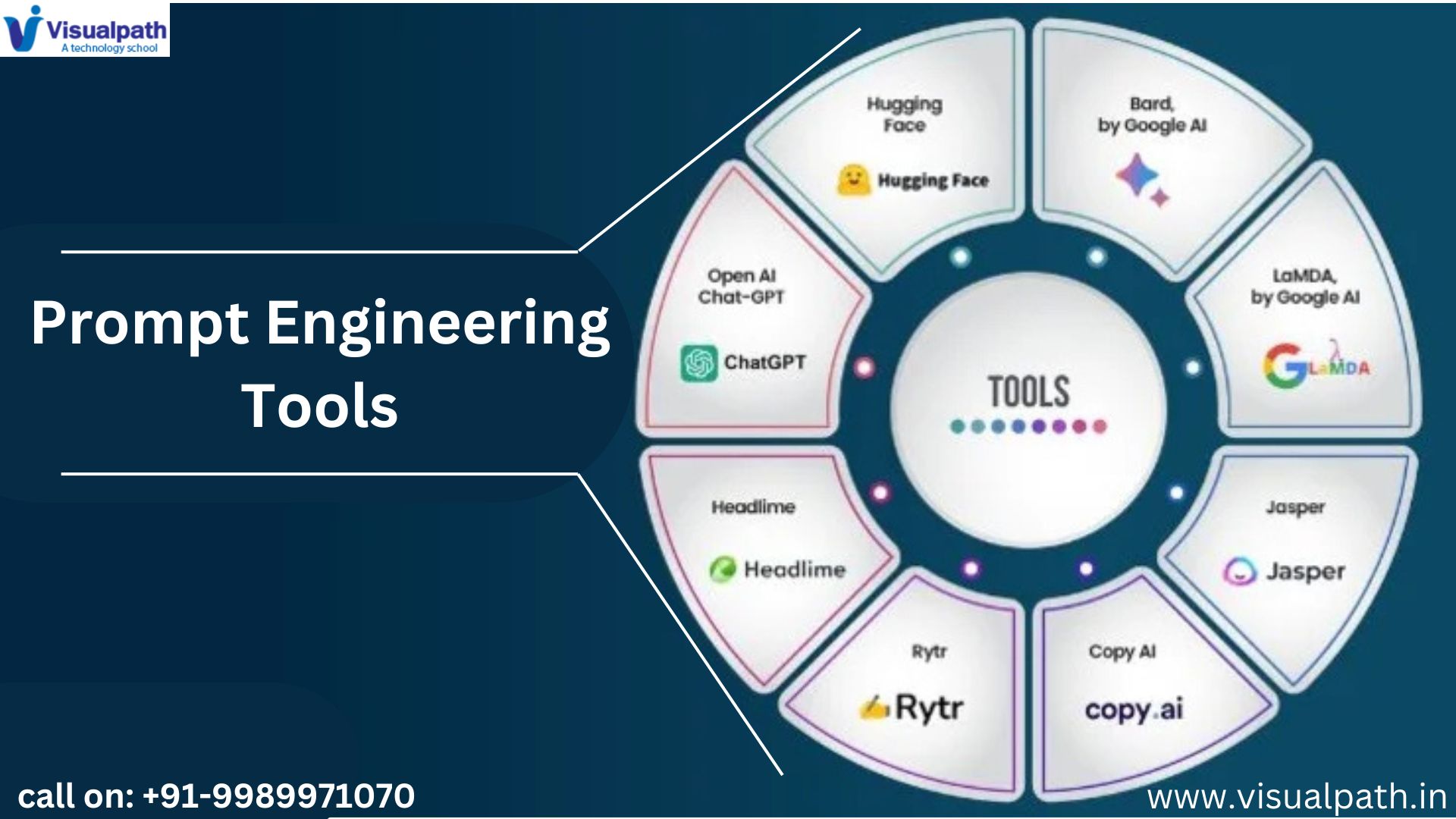The Prompt Engineering Course is a crucial step for anyone seeking to interact effectively with AI models. As the importance of prompt engineering grows, the demand for skilled professionals who understand how to design effective prompts for AI systems has increased significantly. The course teaches individuals the best practices for crafting precise and purposeful prompts to maximize the efficiency of AI models in performing tasks like generating content, answering questions, or solving complex problems. Alongside these lessons, it is essential to explore the tools and resources that can enhance learning and practice in prompt engineering. In this article, we will examine the various tools and resources available for those enrolled in a Prompt Engineering Course and how they contribute to a deeper understanding of prompt engineering.
As AI continues to evolve, the landscape of prompt engineering is constantly changing, with new tools and frameworks emerging to aid engineers in optimizing AI interactions. The Prompt Engineering Training aims to familiarize participants with the most relevant tools that can support their development in this field. Whether it’s through hands-on coding platforms, specialized AI testing tools, or comprehensive resources, learners will find a wealth of opportunities to practice and refine their skills. Understanding these tools is fundamental to becoming proficient in designing prompts that elicit the desired responses from AI systems.
Tools for Prompt Engineering:
1. OpenAI’s Playground:
One of the most popular and accessible tools for learners in a Prompt Engineering Course is OpenAI’s Playground. This tool allows users to interact with advanced AI models like GPT-3 by inputting prompts and observing the responses in real-time. The interactive nature of OpenAI’s Playground makes it an excellent platform for testing different prompts, experimenting with various parameters, and seeing how subtle changes in phrasing can affect the AI’s output. The ability to tweak temperature settings, adjust the model’s creativity, or set specific instructions gives students in Prompt Engineering Training a hands-on experience that is crucial for understanding how AI systems interpret prompts.
OpenAI’s Playground is user-friendly and does not require extensive programming skills, making it an ideal starting point for beginners. As participants work through the Prompt Engineering Course, they can use this tool to apply their knowledge in real-world scenarios, testing their prompts on various tasks, from generating marketing content to answering complex research questions. The feedback generated from each interaction helps learners refine their approach, ensuring they are equipped to craft more effective prompts in the future.
2. AI Testing and Optimization Platforms:
Beyond basic interaction tools, there are platforms specifically designed for testing and optimizing AI prompts. Tools like AI Dungeon and Replika offer additional opportunities to explore AI behavior by allowing users to guide narratives or simulate human-like conversations based on specific prompts. These platforms help learners in a Prompt Engineering Course understand the nuances of AI responses in dynamic, less structured environments. They are valuable for experimenting with prompt structures and seeing how AI adapts to ongoing interaction.
In addition, tools like PromptPerfect allow for prompt optimization by refining the wording and structure of prompts to improve their effectiveness. This type of tool is particularly useful for advanced learners in the Prompt Engineering Training, as it enables them to fine-tune their prompts for specific use cases. It also provides insights into how different language models respond to various prompts, which can be instrumental in shaping a learner’s understanding of prompt engineering.
3. API Integration for Custom Prompt Engineering:
For learners interested in more advanced applications of prompt engineering, API integration platforms provide the flexibility needed to build custom applications. Tools like OpenAI’s API, Hugging Face’s Transformers library, and Google’s Dialogflow allow users to implement prompt engineering directly into their software or customer service applications. These platforms are particularly useful for those in Prompt Engineering Training who want to develop personalized AI solutions, such as chatbots, automated content generation systems, or AI-driven analytics.
By working with APIs, learners can experiment with automating prompts based on user inputs and improving AI performance through continuous prompt refinement. API-based tools are invaluable for professionals who want to take the concepts learned in the Prompt Engineering Course and apply them to real-world business environments, enhancing customer interactions, automating workflows, or improving decision-making processes.
Resources for Learning and Practicing Prompt Engineering :
1. Online Courses and Tutorials:
A variety of online resources are available for learners enrolled in a Prompt Engineering Course. In addition to the course itself, platforms like Coursera, Udemy, and edX offer supplementary tutorials and courses focused on AI, natural language processing (NLP), and machine learning. These resources help participants deepen their understanding of the principles behind prompt engineering and provide additional exercises to practice creating prompts for different AI models.
Many of these platforms offer project-based learning, where students can apply prompt engineering concepts to specific use cases, such as developing chatbots or building AI-driven applications. These projects not only enhance theoretical knowledge but also provide practical skills that are essential for those pursuing a career in AI or related fields.
2. Research Papers and Case Studies:
For those seeking a more academic approach, there is a wealth of research papers and case studies available that explore prompt engineering in detail. Platforms like arXiv, Google Scholar, and ResearchGate host a range of publications that cover everything from the theoretical foundations of prompt engineering to real-world applications in various industries. By reading these papers, learners in a Prompt Engineering Training program can gain insights into the latest developments in the field, including best practices for crafting prompts and emerging trends in AI behavior.
Case studies are particularly valuable because they provide concrete examples of how prompt engineering is used to solve business problems or optimize AI systems. These real-world examples give learners a better understanding of the challenges they may face in their careers and how to address them using the techniques they learn during the Prompt Engineering Course.
3. AI Communities and Forums:
Engaging with online communities is another excellent resource for those looking to expand their knowledge in prompt engineering. Platforms like Reddit’s AI and machine learning subreddits, as well as communities on GitHub and Stack Overflow, provide a space for learners to discuss their experiences, ask questions, and share tips about prompt engineering. These forums are particularly helpful for solving specific issues that may arise during the learning process and for staying up-to-date with the latest trends and innovations in the field.
Being part of a community also provides opportunities for collaboration. Many learners in a Prompt Engineering Course find that working with others helps them understand different perspectives and improve their prompt engineering strategies. Peer feedback is an invaluable resource for refining one’s skills and staying motivated throughout the learning process.
Conclusion:
The Prompt Engineering Course equips learners with the knowledge and skills necessary to design effective prompts for AI systems. Through hands-on training, participants explore a variety of tools and resources that enhance their understanding of prompt engineering. Tools like OpenAI’s Playground, AI testing platforms, and API integration frameworks provide opportunities to practice and refine prompt creation in real-world scenarios. Moreover, online courses, research papers, and AI communities serve as valuable resources that support continuous learning and skill development.
By leveraging these tools and resources, learners in the Prompt Engineering Training can build a strong foundation in prompt engineering, positioning themselves for success in the growing field of AI. Ultimately, mastering the art of prompt engineering allows individuals to interact more effectively with AI systems, enhancing the accuracy and relevance of AI-driven solutions across various industries.
Join Visualpath for a Prompt Engineering Course for the next generation of intelligent business applications. Prompt Engineering Training from industry experts and gain hands-on experience. We provide to individuals globally in the USA, UK, etc. Call +91-9989971070
Course Covered: PromptGen, OpenAI, AI, GitHub, ChatGPT, A/B Testing Tools, Agenta.
Attend Free Demo
Call Now: +91-9989971070
Whatsapp: https://www.whatsapp.com/catalog/919989971070
Visit our Blog: https://visualpathblogs.com/
Visit: https://www.visualpath.in/prompt-engineering-course.html




